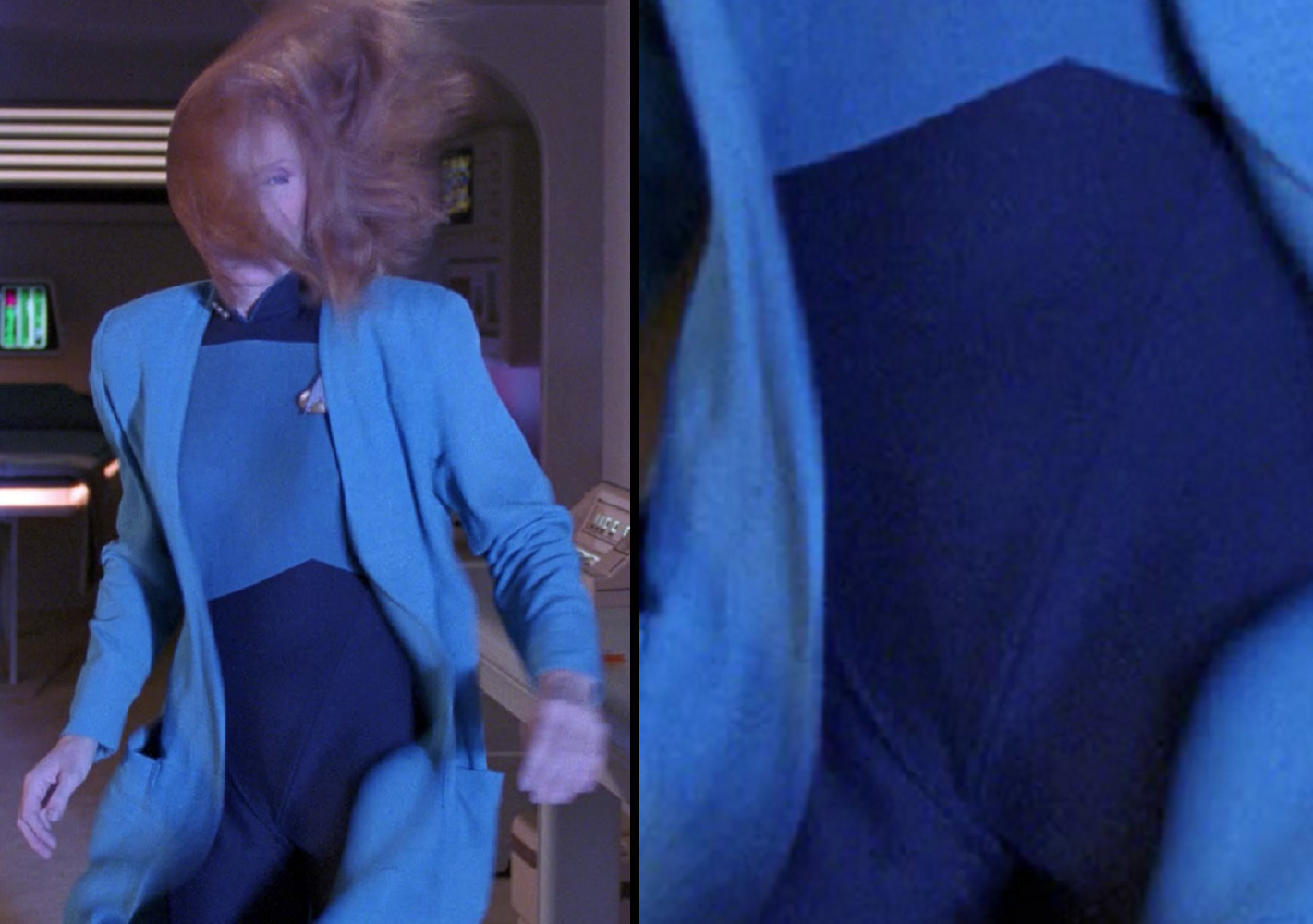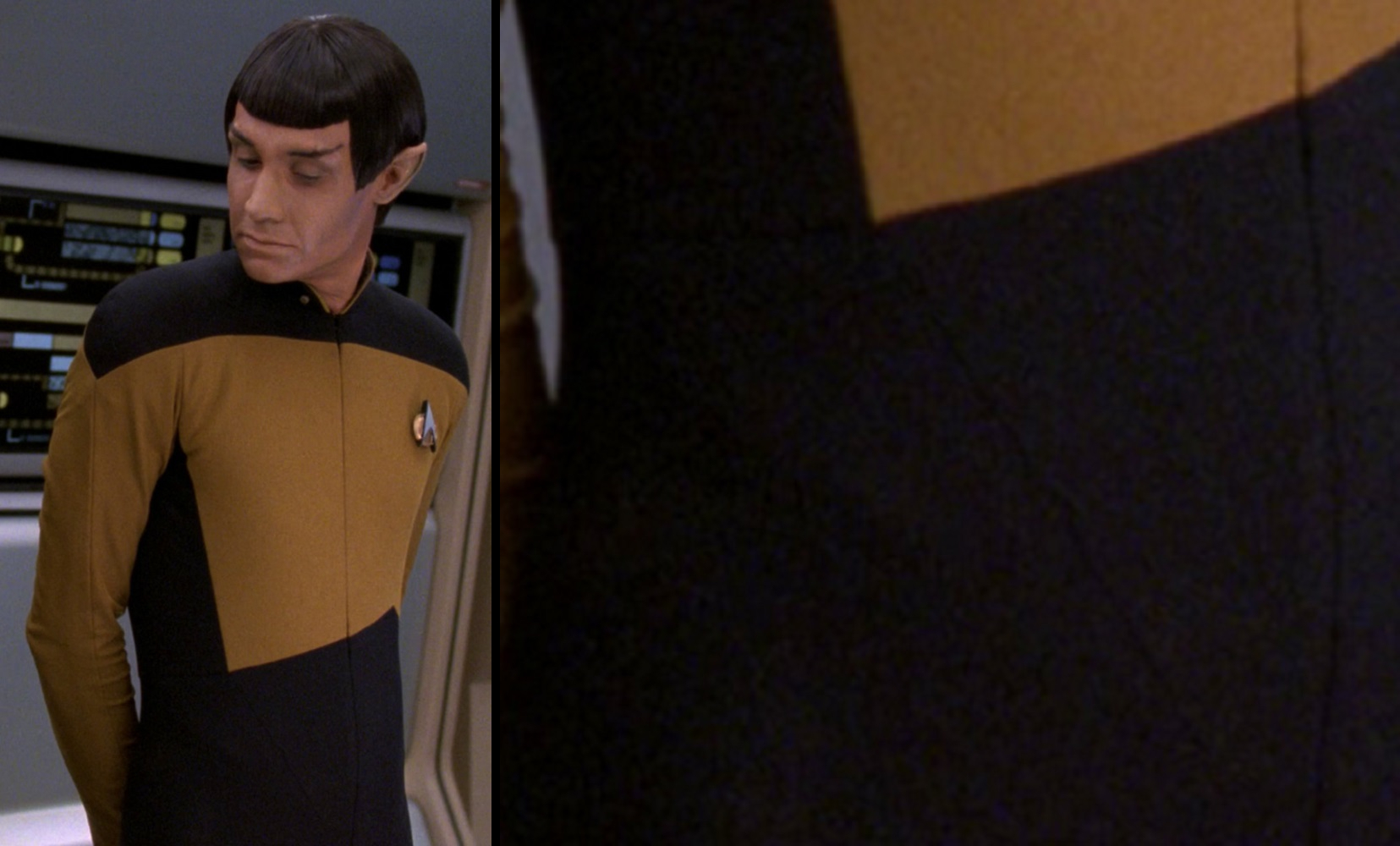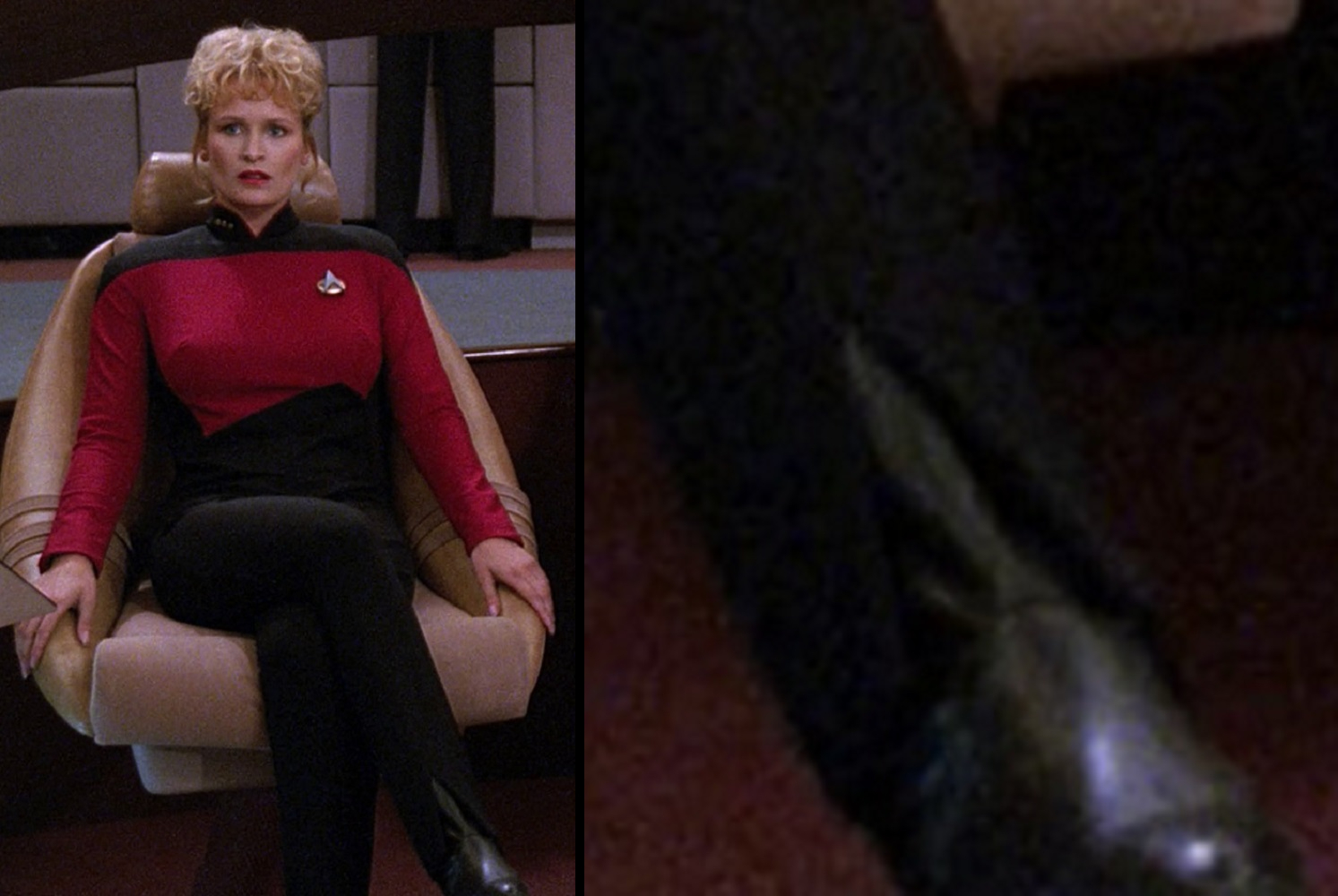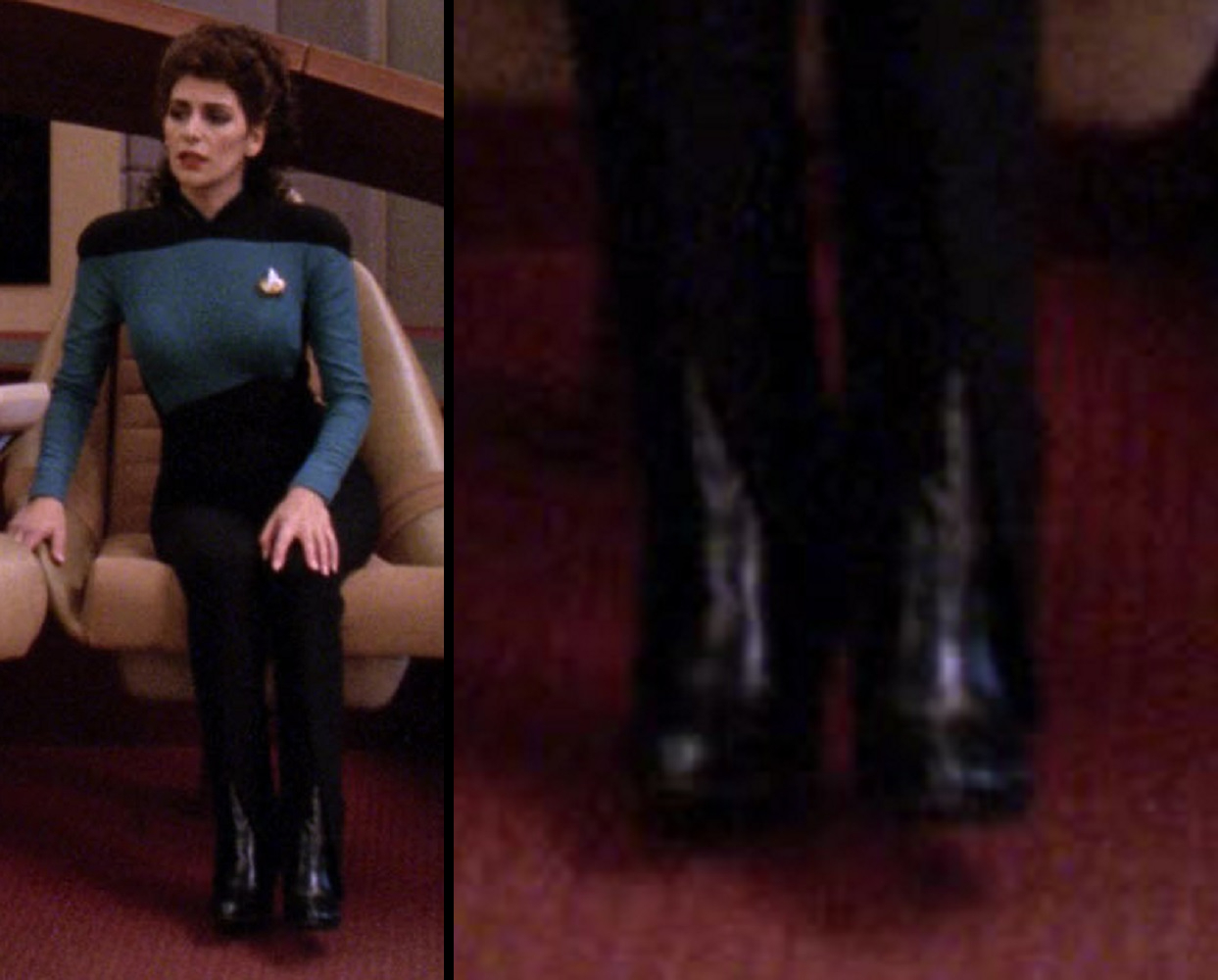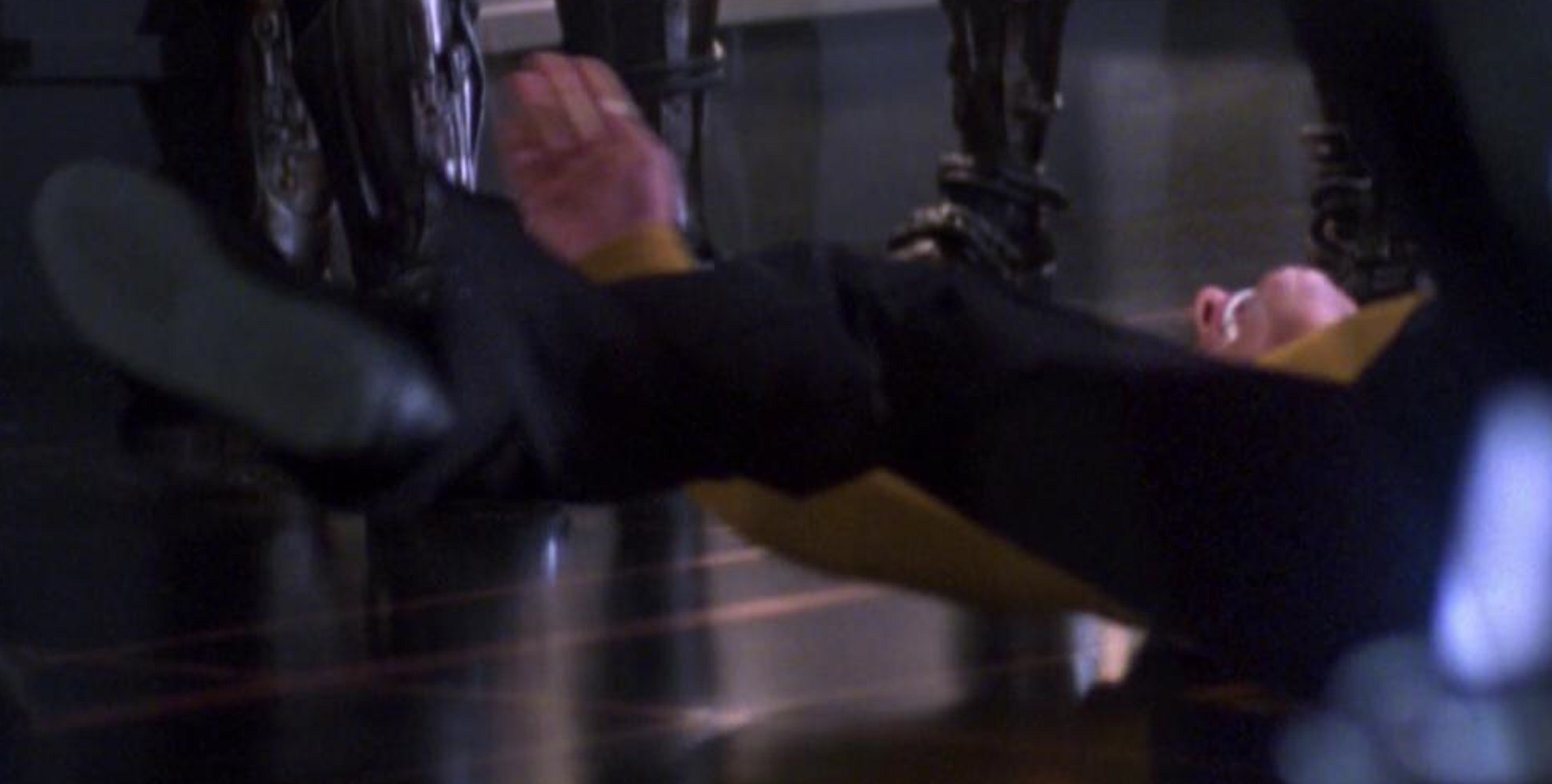Lower Front Seams
In addition to the asymmetrical waist seams, the TNG jumpsuits had two diagonal seams on the lower front torso.
Like the side waist seams, these were somewhat difficult to see in the show, but they were visible sometimes.
These diagonal lower front seams are easier to see in auction photos.
Observe that these seams were slightly curved, they cleanly intersected with the side front seams at the waist, and the lower corner was approximately hip-level.
On the screen-used Ensign Sito TNG jumpsuit I examined, these lower front seams were cinched in up toward the waist, essentially functioning as fitting darts.
However, on the screen-used male extra’s TNG jumpsuit I examined, these lower front seams weren’t cinched in at all. (I’m not sure if this was because it was a male jumpsuit, an extra’s jumpsuit, or it was another example of pattern evolution.)
Pant Leg Seams
Aside from the (triangular and kite-shaped) lower front panels, the TNG jumpsuit pant legs were a basic, four-panel construction: right front, left front, right back, and left back.
Naturally, there was a center back seam beneath the asymmetrical waist – again easiest to see in auction photos.
The outer leg seams were easiest to see in the shows.
The inseam was more difficult to spot (for obvious reasons), but nevertheless, it was there.
Pant Leg Slits
At the lower front of each pant leg was a small vertical slit.
Unlike the early TNG jumpsuits, these slits were “plain” and not accented with division-colored trim.
The height of these lower front “slits” varied (because of course they did).
On the screen-used male extra’s TNG jumpsuit I examined, the slits were about 6 ½” tall.
However, on the screen-used Ensign Sito TNG jumpsuit I examined, they were only about 4” tall.
Dr. Crusher’s usually appeared to be in the 5-6” range.
The slits on Counselor Troi’s jumpsuits were noticeably taller, though.
These facings were understitched, and the outer edges were hand-sewn to the underside of the pant leg with black thread – although the facing on the male extra’s jumpsuit was hem-stitched, rather than catch-stitched.
Elastic Stirrups
Another element the later TNG jumpsuits retained from their predecessors was elastic “stirrups,” which wrapped around the boots underneath the heels.
These elastic stirrups prevented the pant legs from pulling upward or twisting much, keeping the pant legs looking nice and sharp – even in the unlikeliest of times, further adding to the illusion of futuristic clothing.
Also like their predecessors, these elastic stirrups were attached to the lower pant legs multiple ways; my guess is that minor details like this were probably left to the discretion of the individual costumer.
On the screen-used Ensign Sito TNG jumpsuit I examined, the elastic stirrups were attached with square-shaped topstitching.
However, on the screen-used male extra’s TNG jumpsuit I examined, the stirrups were attached via an edge-stitch just above the hem, and a “stitch-in-the-ditch” above that.
It looks like in this shot of Ensign Ro’s lower legs, the stirrups were simply undone – although this could’ve been by design or accident. (The cast liked to undo the stirrups between takes to relieve the tension they created.)
Pant Hem
Unsurprisingly, the specific pant hem allowances varied.
On the screen-used Ensign Sito TNG jumpsuit I examined, the hem allowance was about 2 ½”.
On the screen-used male extra’s TNG jumpsuit I examined, there was only about an inch of hem allowance – although being an extra’s uniform, it was doubtless intended to be altered as-needed for different wearers.


